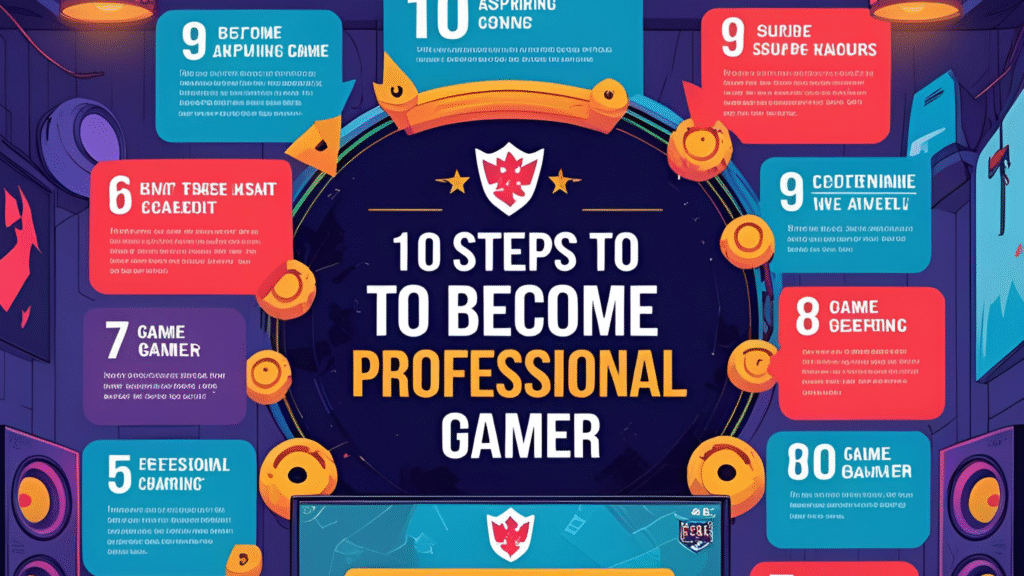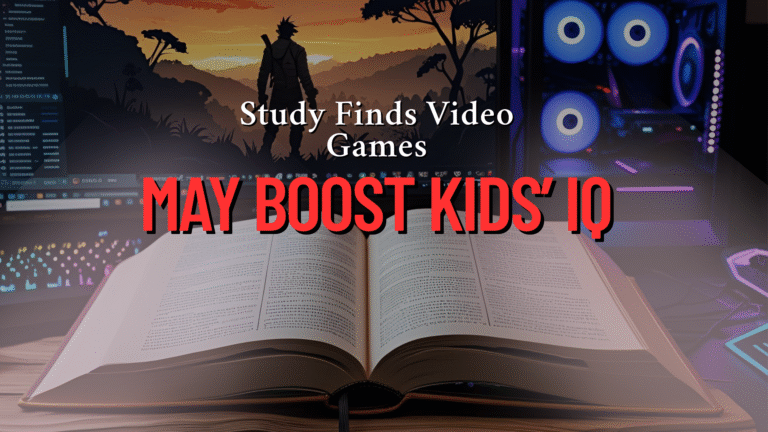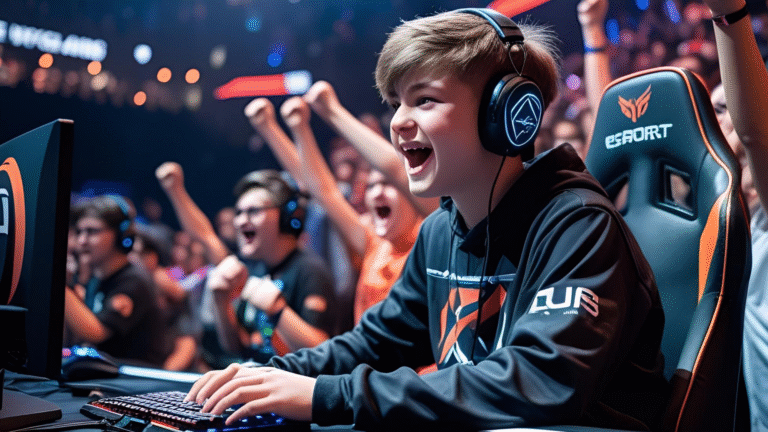
|
Getting your Trinity Audio player ready...
|
A pro gamer is usually considered someone who plays in competitive games and participates in tournaments. You’re also considered pro when you already have some earnings in the game — meaning you’ve already won or had a placement where you received something from the tournament. Of course, these tournaments offer prizes, which can result in a full-time income through winnings, team salaries, endorsements, and content creation.
When they’re not competing, pro gamers usually spend their time training, analyzing plays or games from other teams, and staying healthy both mentally and physically.
🎮 Level Up Your Game with Our Patreon! 🎮
- 📚 Early Access to Full Guides: Get personalized guides for your favorite games before anyone else.
- 🔍 Exclusive Analyses: Deep dives into top teams and game strategies just for you.
- 🏆 Join Tournaments: Compete in tournaments with cash prizes and exclusive in-game items.
- 💥 Be the First: Access the latest news and updates in the gaming world.
👉 Don’t miss out—join our Patreon today and become the ultimate gamer!

10 Steps to Become a Pro Video Gamer

1. Choose Your Game
Your journey starts with choosing your game. Unlike many players who play lots of games, pro players focus on just one — usually the game they most enjoy playing that has Esports participation. So, if you’re going to choose a game to focus on and become pro, pick an Esports game with good viewer engagement and that’s known for its tournaments. There are many Esports games that just don’t have such a large community, making it harder to receive salaries like in games such as CS2 or even LOL. This is because those organizations don’t have the budget to pay salaries and your earnings are more based on tournaments you win throughout the year.
If you’re not familiar with games that have a large Esports community, I’ll include some genres:
- First-person shooters (e.g., Valorant, CS2)
- MOBAs (e.g., League of Legends, Dota 2)
- Battle Royales (e.g., Fortnite, PUBG)
- Sports games (e.g., FIFA, NBA 2K)
Choosing the right game depends on your interests, but once you choose one, try to understand more or less the Esports community by looking for tournaments and checking the dates of major tournaments or even the number of teams or players that participated, to get an idea of how many players the game you chose has. Of course, you can also choose fighting games like Brawlhalla or even Street Fighter or Mortal Kombat, which also have a large community and significant earnings — it always depends on what you’re looking for.
2. Join the Community
Join the community where you’ll play with or against other people — through Discord, forums, Reddit, etc., where you’ll get to know the game better or even get tips from more experienced players who can help you improve. To evolve faster, always try to find tutorials on YouTube to learn mechanics and improve them. When you feel ready to play in a tournament, try it out and see how it goes. You don’t have to wait until you’re at the same level as other players — even if you play and lose, at least you gained more experience because you played against better players and learned what you need to improve based on your gameplay and theirs.
3. Invest in the Right Equipment
Invest in the right equipment — this means it’s good to have a good monitor with high refresh rate. Some of the best are 144Hz and 240Hz. What I recommend for someone wanting to play at a competitive level is a 240Hz monitor, which will give you significant advantages over other players. Get a good keyboard and mouse — especially if your game needs those peripherals (some games use only keyboard, others use both). Depending on what you use in your game, try to stay informed on what’s best on the market and why. Even if you don’t have the money to buy the best, at least you’ll know how to choose a good one within your price range. Also, get a good headset — this is especially important in FPS games where you need to hear everything (like footsteps, weapons reloading, etc.). A good headset gives you that advantage.
You don’t need a gaming chair, but since you’ll be investing in your setup and spending a lot of time playing daily, it’s worth being in a comfortable space that suits you.
4. Practice — A Lot
You’re going to practice a lot, trying to improve your mistakes and not repeat them. Try to analyze your gameplay (if you already understand your game well — if not, try to get someone to analyze for you or learn more by watching top players and comparing to your gameplay). Create a training routine where you train various aspects. Most pros train when they’re done with competitive play for the day — that is, when they’re not playing ranked or anything that counts toward their status — because your reactions get tired and your performance drops, making you think you’re playing badly when you’re just mentally and physically tired from training.
So, when you train, do it when you’re not doing anything else in the game. Afterward, you can keep playing, but play modes that don’t matter or just for fun. Warm up before playing, whether it’s your aim or your reflexes, so you’re not going into a match cold. Have sessions just for gameplay analysis where you note what you did wrong and try to improve. Also analyze professional team games, paying attention to gameplay details, combos, strategies, etc.
Obviously, try to learn everything about the game — what each feature does — and this is easy: watch guides on YouTube or pro players using mechanics you didn’t know, and now you’ll understand their purpose. With these techniques, if followed to the letter, you’ll absolutely start evolving quickly and get closer to winning your first tournament.
5. Learn the Competitive Ladder
Each game has its own competitive ladder. Start small — enter online tournaments, local events, or in-game ranked ladders. Research how your chosen game ranks players and what it takes to qualify for higher-level competitions. Some games offer open qualifiers for high-level competitions. Others offer qualifiers for major esports events or ranked ladders that lead to semi-pro leagues.
Understanding how to move from amateur to pro status will help you set realistic goals and plan your rise.
6. Start Small, Then Climb
Don’t expect to go pro overnight. It will take time, but the more you train and push yourself, the faster you’ll get there. Always think everything is achievable — you just need to work for it. The same goes for being a pro: treat the game as a job and aim to always be the best if possible.
Start with amateur or semi-professional online tournaments to prepare yourself mentally and in gameplay for the tournament vibe. Every tournament has a unique pressure, and you have to overcome that pressure to perform well and rank high on the tournament leaderboard. If you let nerves win, you’ll play badly and feel frustrated. Always remember that games have a psychological impact and you need to develop ways to get through tough moments and come out on top.
7. Join or Form a Team
Many competitive titles are team-based games. Whether you’re joining an already established team or forming your own, the key is chemistry and communication with your teammates. Understand each other’s playstyles to always perform at your best without harming the team. Remember — you alone don’t make a team. Work together, because at this level, the goal is to win and have positive results.
8. Compete and Build Your Resume
Once you have a team, start entering major events — whether online or in-person like LANs. The more competitors, the better your chance of standing out and being noticed by other teams or organizations, like scouts, sponsors, etc.
Use platforms like:
- Faceit
- ESL
- Challengermode
- Smash.gg
Keep a record of your performances. Your competitive resume is key to being signed by top teams.
9. Take Care of Your Body and Mind
As mentioned before, sometimes playing badly can affect your mind and make you think you’re just bad, which can actually make you play worse. So one of the most important parts of maintaining consistent and meaningful performance is taking care of yourself. Try to understand why you played badly — maybe it’s an opportunity to see more mistakes and fix them. And you don’t always play badly because you made mistakes — maybe the other team played better, or maybe you were tired or trained before the match. Many things can affect your gameplay — maybe you didn’t warm up, etc. It’s normal to have off days. There will be days where your plays amaze even you, and others that just don’t go well. Always think about the reasons — and if there’s no clear reason, accept that bad days happen and try to minimize them. Even on a bad day, aim to play professionally and clean — not at your best, but still well.
10. Keep Improving
As we’ve said, you might reach the top and think you don’t need to train anymore because you achieved your dream — or you might feel unmotivated. But remember: the same way you trained to get there, someone new is training every second to enter the pro scene. You might even be replaced on your team because you’re no longer performing at the necessary level, and new players are standing out more than you. So always keep improving, training, and aiming to stay on top, ready to face new players and new techniques.
Pro Gamer vs. Pro Streamer
While both pro gamers and streamers earn money from gaming, they follow different paths:
| Pro Gamer | Pro Streamer |
|---|---|
| Competes in tournaments | Broadcasts gameplay online (e.g., Twitch, YouTube) |
| Income from winnings, team salaries, sponsorships | Income from subscribers, donations, ad revenue |
| Focused on mastering one game | Can play various games, focus is on entertainment |
| Training and competition-based | Audience engagement and personality-driven |
Final Thoughts
Becoming a professional gamer is a challenge, but incredibly rewarding for those who commit and dedicate themselves to the grind. Whether you aim to be the next Esports star or simply want to evolve your skills, following these 10 steps will get you closer to turning your passion for gaming into a career.





